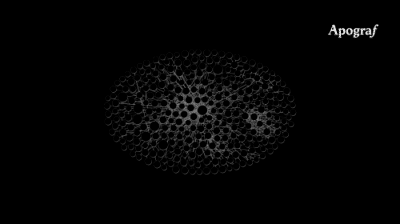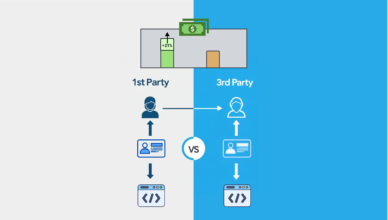Open Access (OA) publishing has a long history, going back to the early 1990s, and was born with the explicit intention of improving access to scholarly literature. The internet has played a pivotal role in garnering support for free and reusable research publications, as well as stronger and more democratic peer-review systems — ones are not bogged down by the restrictions of influential publishing platforms.
Despite the many hurdles that the distribution of information has had to overcome, it has done well in evolving from the limited confines of a select few sources, to, for the most part, being widely available to the public, all as a direct result of the development of the internet. This trend of increased accessibility to academic research is one that has been centuries in the making, with the internet and open access systems preceded by the invention of the printing press and mass-production systems.
Looking back, looking forward
Launched in 1991, ArXiv.org was a pioneering platform in this regard, a telling example of how researchers could cooperate to publish academic papers for free and in full view for the public. Though it has limitations — papers are curated by moderators and are not peer-reviewed — arXiv is a demonstration of how technology can be used to overcome some of the incentive and distribution problems that scientific research had long been subjected to.
The scientific community has itself assumed the mantle to this end: the Budapest Open Access Initiative (BOAI) and the Berlin Declaration on Open Access Initiative, launched in 2002 and 2003 respectively, are considered landmark movements in the push for unrestricted access to scientific research. While mostly symbolic, the effort highlighted the growing desire to solve the problems plaguing the space through technology.
The BOAI manifesto begins with a statement that is an encapsulation of the movement’s purpose:
“An old tradition and a new technology have converged to make possible an unprecedented public good. The old tradition is the willingness of scientists and scholars to publish the fruits of their research in scholarly journals without payment, for the sake of inquiry and knowledge. The new technology is the internet. The public good they make possible is the world-wide electronic distribution of the peer-reviewed journal literature and completely free and unrestricted access to it by all scientists, scholars, teachers, students, and other curious minds.”
Plan S is a more recent attempt to make publicly funded research available to all. Launched by Science Europe in September 2018, Plan S — short for ‘Shock’ — has energized the research community with its resolution to make access to publicly funded knowledge a right to everyone and dissolve the profit-driven ecosystem of research publication. Members of the European Union have vowed to achieve this by 2020.
Plan S has been supported by governments outside Europe as well. China has thrown itself behind it, and the state of California has enacted a law that requires open access to research one year after publishing. It is, of course, not without its challenges: advocacy and ensuring that publishing is not restricted a few venues are two such obstacles. However, the organization behind forming the guidelines, cOAlition S, has agreed to make the guidelines more flexible.
The emergence of this trend is not without its difficulties, however, and numerous obstacles continue to hinder the dissemination of information in a manner that is truly transparent and public. Chief among these are the many gates that continue to keep research as somewhat of exclusive property, besides the fact that the infrastructure and development for such systems are short on funding and staff.
Progress and Remaining Obstacles
To say that the centralization of research publishing power is the source of all these problems may be reductive, but it nonetheless remains one of the primary problems facing scientific advancement.
OA platforms have received criticism for their proposed models; some of it has been directed towards ”hybrid” platforms that permit both open publication and subscription-based services, and some of it towards the sustainability of a platform that is effectively dependent on the goodwill and motivation to publish on these platforms. Any form of research publication comes with processing charges, and whether it be truly open or subscription-based, the source of the funding becomes a problem. One proposed solution is sourcing the money from the grants that fund research, though this too is no guarantee.
A cultural shift in the mindset of researchers is a more intangible problem that might pose a bigger obstacle. How does one convince a researcher to adopt a lesser-known OA platform when their career is dependent on being published in a “high impact” journal? Driving OA further into the mainstream and uniting institutions and senior researchers is a serious challenge that will be a protracted task requiring constant effort.
The commercialization of scientific research aside, the relative newness of OA methodologies also means that they are at a sizable disadvantage in the competition against established journals. Closing the gap requires funding and manpower, which can be a hard sell to new generations of academicians intent on making a name for themselves by publishing their research on platforms which have a reputation, however questionable, for being prestigious.
Impact Factors (IFs), calculated and published by the Institute for Scientific Information (ISI), is another critical problem for OA journals and one that’s been written about extensively. IFs determine the prestige of a journal and the evaluation of researchers, who are incentivized to appear in journals with high IFs. The trouble here is that, with most OA journals being new, impact factors are low while high-quality research is only accumulated over time. This is a significant barrier to entry for OA journals as they attempt to attract the highest quality of research.
Despite these challenges, many open access initiatives see a future with limitless potential for open access databases. On a broad level, free access to information can encourage civic engagement, entrepreneurship, economic growth. The very nature of OA platforms also facilitates data preservation, which is important for posterity. One can imagine a future where a decentralized OA platform is a hub for knowledge discovery and dissemination, offering public APIs that can encourage interdisciplinary research and entrepreneurial development.
Technological Solutions Exist, and More are Being Developed
There exists a solution to these problems, one that is growing in conviction and development: distributed open access systems that make research as freely accessible and reusable as possible. Modular frameworks that provide author promotion, community-driven development, peer review transparency, manuscript submission and networking tools on top of hosting services are only some of the solutions being considered.
For example, the Collaborative Knowledge Foundation (Coko) focuses strongly on community-led solutions, and features solutions for book publishing, peer reviews and “micropublications”, allowing researchers to publish the periodic results obtained throughout a project.
Distributed Ledger Technologies (DLTs) take the aforementioned properties a step further, replacing the hierarchical models of old with both full-scale solutions, or a hybrid one, with effective token incentivization mechanisms that encourage more reliable and fair peer reviewing to ensure high-quality publication.
Apograf is an example of a platform implementing DLT solutions, aggregating publications in the fields of cryptography, distributed computing and blockchain technology. The platform has been integrated with the ORCID registry, which preserves author accreditation, and remains usable throughout a career.
The benefits of a successfully implemented and adopted OA platforms are too significant to ignore. Inroads have been made, but these type of platforms still have both cultural and economic challenges to overcome before they can break the research publication vault wide open.
Conclusion
While the further implementation of OA has hurdles yet to overcome, the benefits far outweigh the struggle involved to popularize it. With varied solutions being developed, a decades-old problem is on the cusp of a sea change moment. Although, if open access it to become a global defacto, a shift is required in both the digital space as well as in the mindset of the scientific community.
Read the original article at: https://medium.com/apograf-hq/the-landscape-of-open-data-policies-58baa426c554









